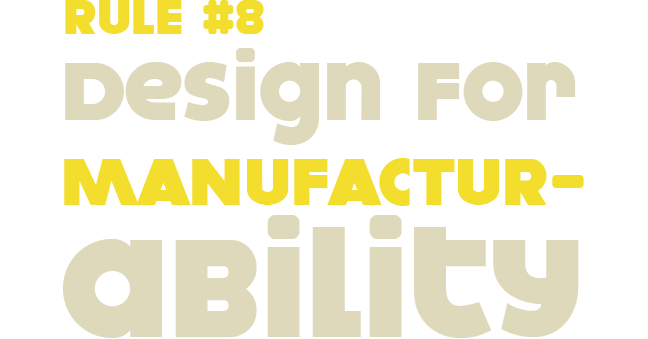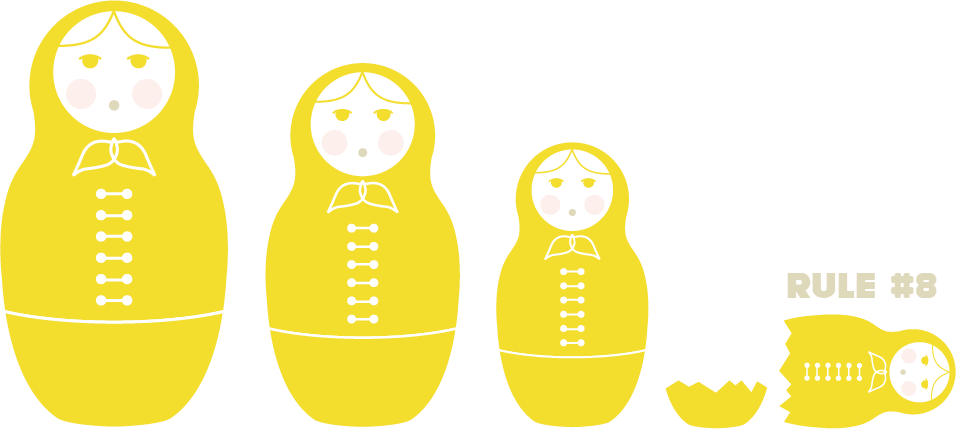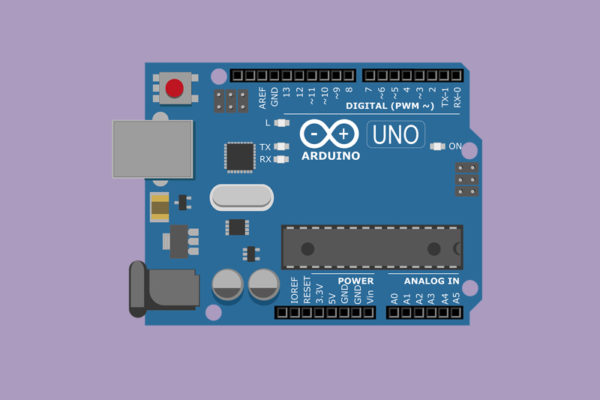
Design For Manufacturability
Making one of something is easy. Making 500 is not. The differences between prototypes and production models is the difference between hobbyists and manufacturers. Here are some quick tips, especially for electronics:
• Remember that every electronic product must be designed twice, first the product itself and second the test jig that you put it on after manufacturing to ensure that it’s working.
The test jig must not only be able to check all the electronic elements, which means special software to run through a series of diagnostics, but it must also make electrical contact with all of your product’s connections with a simple press.
That means using special spring-loaded connectors called “pogo pins” and creating PCBs that guide your product into the right position so that the pins make contact and the test software can be run by non-engineers in seconds.
• Use surface-mount components if at all possible, so they can be auto-mounted by pick and place machines at an assembly house. If you use any traditional “through hole” components (those with wires or pins that go through the board), they will typically have to be hand-assembled, which can triple the price (unless you’re making a kit, in which case asking the user to solder a few through-hole components is just part of the fun).
• If you want to ship to Europe, you need to use lead-free (ROHS) boards and solder. This means higher temperatures for your reflow oven, so that toaster oven you’ve been using probably won’t be up to the job anymore.
• Finally, the difference between the pros and amateurs is a good Quality Assurance (QA) process. Every product must be tested coming off the line, ideally with a test that checks every component under load.
We typically see failure rates around 1% even on our best-designed products, simply due to the number of components and the combinatorial statistics of a failure in one of them.
When we’ve designed a product poorly, such when we mistakenly used normal rather than gold-mix PCB traces on boards with fine-pitch components (be thankful if you don’t know what that means; it was a nightmare), the failure rate can skyrocket to 25%, which is a klaxon alarm telling you to redesign the board.
You’re doing this as much to protect your customers as yourself. With a normal failure rate of 1%, if you’re not catching bad products that means you’ve got one unhappy customer for every 100 goods you ship out.
They’ll need to return the product and you’ll need to send them a new one, shipping included, at your expense. Even worse, they may not know that it’s a faulty product and you’ll have to spend a lot of time with them doing tech support before that becomes clear.
And then there’s the probability that they’ll go to your forums and complain, which can lead to a perception that your failure rate is much higher than it is (happy customers don’t post as much as unhappy ones do).
Either way, that 1% failure rate can turn into 5% of your costs if you don’t catch mistakes before they go out the door.
Rule #1: Make A Profit
Rule #2: It Takes Lots Of Cash To Stay In Stock
Rule #3: Buy Smart
Rule #4: Basic Business Rules Still Apply
Rule #5: You Get No Leeway For Being A Maker
Rule #6: Be As Open As You Can
Rule #7: Create A Community To Support And Enhance Your Products
Rule #8: Design For Manufacturability
Rule #9: Marketing Is Your Job
Rule #10: Your Second Most Important Relationship Is With Your Package Carrier




